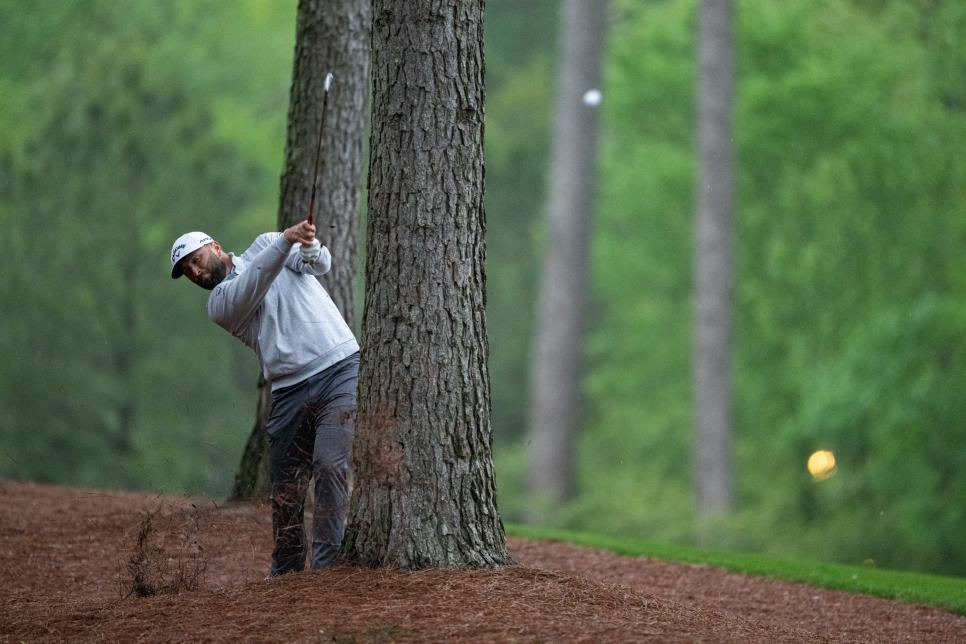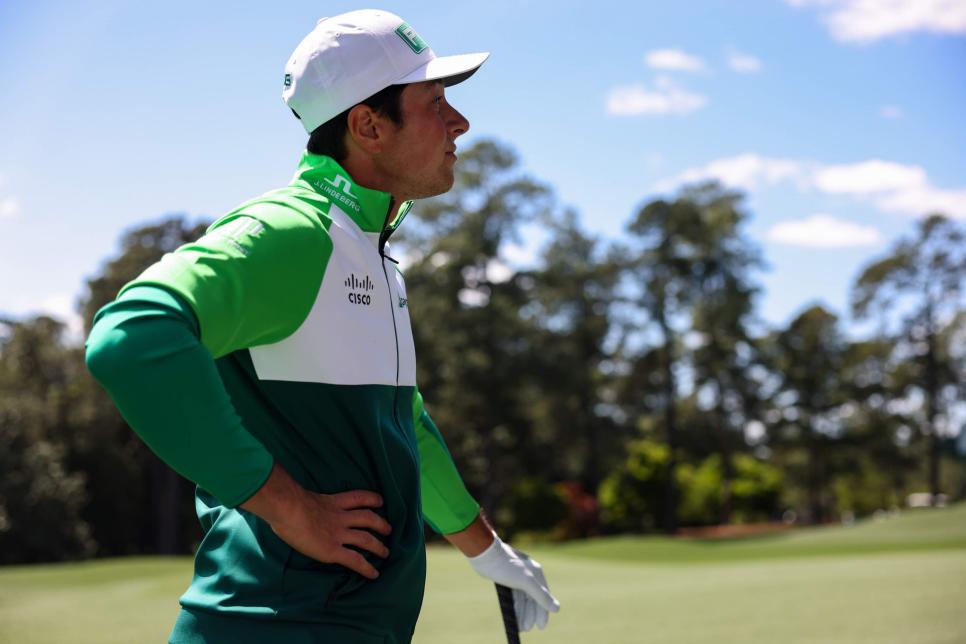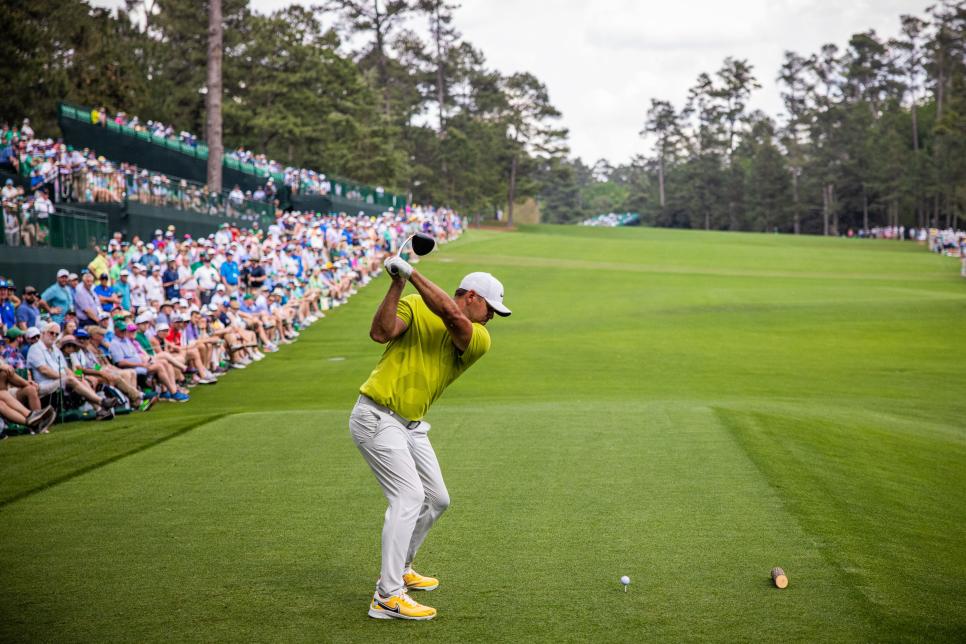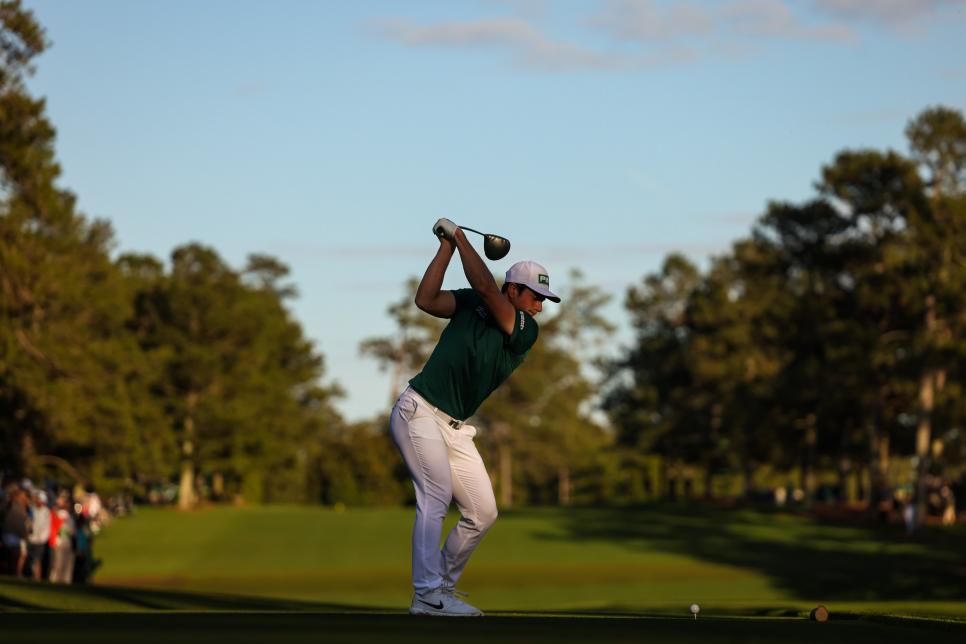I often wonder what would’ve happened to top golfers in different circumstances. What would’ve happened to their careers if everything hadn’t landed just so, in exactly the right spot?
What if Tiger Woods had picked up a left-handed club?
What if Scottie Scheffler found himself in front of a coach who wanted to change his footwork, rather than one who didn’t?
What if young John Daly took golf lessons?
I wonder about this a lot when it comes to Jon Rahm, the man with a new green jacket, whose untold talent had countless opportunities to run astray at the hand of bad advice. Rahm will often tell a story about going to a junior golf academy in Spain, and the coach wanting to change his swing. He told him no, that wasn’t going to happen, and to work with what he had.
It takes some audacity for a kid to tell a grown professional how to do his job, but the greats have an intuitive genius to decode only the things that matter, and an uncompromising stubbornness to disregard the things that don’t. To problem solve out of whatever situation they find themselves in.
It was only years later that Rahm came to understand why: He was born with a clubfoot, and only capable of moving in certain, specific ways.
“There's a reason why I have the swing I have and the mechanics I have,” Rahm said on Sunday after his win. “It's part of who I am.”
The modern tour player tends to surround themselves with a revolving door of expensive crutches when things go south. “Sensory blitzkrieg,” as Golf Channel’s Brandel Chamblee called it on "Live From" Friday night. Golfers can get pretty good that way. Very good, actually. But never quite great.
Like a young Rahm, the greats are the juniors who ask questions, and who don’t care how something looks. They're the ones who push through alone, with a single sense of purpose. They’re helped along the way, but they’re the ultimate judge and jury of their own games, from the first tee shot to the final putt.
The greats are the ones who always find a way, no matter what, because that's what greats do. And the greats are the ones who years later, slip on green jackets because of it.
1. Learn to adapt

David Cannon
The rain poured and the cold came halfway through the tournament. Rahm got the worst of it: "You think I got the bad side of the draw?" he asked a reporter sarcastically in his winning press conference. The stats say it was an almost two stroke disadvantage compared to the other side of the field, according to the scoring average statistics. How did he get through it?
"If there's a word any golfer has to be, it's adaptable,” he said of the bad side of the draw. “You have to wake up, and you have to deal with it."
Whether it was his four-putt double on Thursday or the monsoon he played through on Friday, Rahm kept adapting, kept surviving, and soon found himself thriving. Adapting where you aim; adapting what club you hit; adapting your expectations. Knowing how to change at a moment's notice might be the key trait of golf, and the secret to success at every level.
Rahm and his fellow Ryder Cup teammate, Matt Fitzpatrick, did it best.
“I think when the weather gets like that, guys just carry on playing what they normally do,” Matt Fitzpatrick says. “They’re going at flags when they shouldn't and just trying to make a score or trying to make something happen when they don't need to.”
Others, less so.
Cameron Young, playing in the same conditions as Rahm and Fitzpatrick, made two of his tournament’s three double bogeys in the pouring rain. He sang a different tune.
“Two of them were in the pouring rain, so I don't think that's really my fault,” he said. “It was basically impossible out there.”
Unfair? Perhaps. Unlucky? Definitely. Impossible? Nope. Young is a golfer of incredible talent who no doubt has big wins in his future. But it takes a certain mentality to win majors, as Rahm proved. Young, at least last week, seems a few reps shy of mastering the art of adapting.
2. Early errors only kill you if you let them
Hang around players long enough and you’ll find they’ll find a way to turn everything into a positive if they look at it long enough, and so was the case with Rahm. No one wants to make big numbers—indeed, your avoiding big numbers is statistically the key difference between high and low handicaps. But big numbers come for all eventually. For Rahm, his came after four putts on the very first green of the tournament. No Masters winner, before Rahm, had accomplished that feat.
And yet, somehow, Rahm made it into a good thing.
"If you’re going to make a double on any hole in the tournament; four-putt or something, it might as well be the first hole," he said.

J.D. Cuban
Early mistakes are annoying, but framing them as opportunities to recover from is something that stuck with me. Golf, after all, isn’t a game with an end destination. It’s a journey. Like a plane going through turbulence, there’s something rewarding about navigating your way to clear skies on the other side. Persist long enough, and good things will come in the end.
3. Checklist your yardages
Cameron Young hit his drive 241 yards on the 18th hole during the third round in the cold and rain. Adam Scott hit a 4-iron 184 yards. Jon Rahm considered a 7-wood into the 18th hole.
Pros are unbothered by the notion of clubbing up when need be. They’re just trying to hit their targets, because there’s legacy on the line. The rest of us can’t say the same. We’re constantly under-clubbing ourselves, in part because of willful ignorance (we think we hit the ball longer than we actually do) and in part because we simply underestimate how severely the conditions can impact our shots.
Listening to players figure out what club to hit is almost like listening to them run down a checklist, and the rest of us would be wise to do the same.
The temperature removes about two yards per 10 degrees of temperature drop.
The falling rain chops off yardage too.
Green is slightly elevated, that adds yardage.
Trouble short? Add some security yards.
Soft green means it’s all carry distance, add a few yards.
Some of this is bad weather dependent, of course, but go through the process yourself and you'll quickly realize how quickly a short iron on paper can transform into a long iron in reality. It’s players' checklist process which allows them to accurately account for each element as they come, and wrangle the impossible task of pinpointing a number in the raging elements. It's a good habit to have. And one that may help the rest of us on those blue sky days.
4. Attack with slopes, not the lines
I camped out on the first tee box of the Par 3 contest on Wednesday as a host of players came through, including Seamus Power, who went on to make back-to-back holes-in-one during his round (the 15th and 16th of his career, he said!).
“There’s so much luck to a hole in one,” he said, humbly.
The pin was tucked on the left side of the green on the first hole, but player after player with a half wedge in their hands, took dead aim at the back portion of the green, away from the pin and towards a slope.

Christian Iooss
When the rest of us think of attacking a hole, a pin, and chasing birdies, we think of taking dead aim. Pros almost always seem to take a different route. When they look to attack pins, often they’re using the slopes, not the lines. They’re looking to land their ball in the safest possible sloping spot, and allow the undulations to do the rest. Even from the fairway, pros are seemingly in a constant state of reading the green—understanding and the details, the slopes, and using them. It’s especially apparent at Augusta, but it exists everywhere.
Talking aggressive lines leads to short-sided chips and bogeys. Forgetting the pin and chasing the slopes is the play.
5. Know your swing’s low point
Most players don’t like talking about a problem area in their game until after it’s fixed. Not Hovland, who has been candidly offering updates about the progress of his short game in real time.
Hovland, who ranked 191st in SG: Around the Green last season, spent most of the past two years trying to re-work how his wrists move during his chipping swing. Last offseason Hovland paired with golf coach Joe Mayo, who blew up that idea and convinced him to change strategies. He’d show him videos of world class, major-winning chippers like Dustin Johnson and Jordan Spieth, who have similar wrist motions to Hovland around the greens.

Ben Walton
Hovland has a very shallow angle of attack with his full swing. It’s what allows him to hit bullet, low-spinning fades. That shows up in his chipping. Now, Hovland is working on steepening his angle of attack (hitting more down, to oversimplify), by tilting his upper body less away from the target.
“The biggest problem was that I've gotten too shallow with my chips, and that's just kind of having to yank the hands forward and you get no loft,” he said. “Once I started getting more on top of the ball, get some more angle of attack down, and now I can actually percent the loft in the way that I want.”
It’s all about finding the low point of your move. Too far ahead or behind the ball, and you’ll struggle making good contact. One way Hovland practiced dialing-in his earlier in the week was by taking a ball, stepping on it so it was plugged into the turf, then hacking it out.
“I've had a big hole that's been leaking, and I'm starting to plug those holes,” he said. “When I'm practicing, it looks really, really nice. I would put my short game up against anyone in the practice area, but it's a little bit different doing it out here and trusting it.”
6. Load the right side
The more I ask pros about their golf swings, the more I realize how much they care about loading properly on the backswing.
For the rest of us, the best way to understand this is that it's all about their trail hip. The more golfers turn around, deep into their trail hip, the better they'll be able to push off it on the downswing, the more power they can generate as a result. There's no magic formula for every golfer. Some golfers load their trail side more than others, but they all get back there on the backswing, and they all push off it in transition.
Brooks Koepka likes and needs to load his trail side a lot. That was the central challenge with his right knee injury — and the biggest clue that his comeback is for real
"When the knee was messed up, I was afraid to get back on it to load it on my right side," he told me. "It was more of a Stack and Tilt."

Ben Walton
Koepka wouldn't load on the backswing, and when he kept too much weight on his lead side, it sent the ball in every direction.
"I was staying on the left side and I'd back up out of it. The awkward lies were not fun," he said. "Now it's so much easier to be able to load, get that full turn and rotation going back. It's tough when you're just playing it on your left side there's no power there, either. That was part of the frustrating part."

